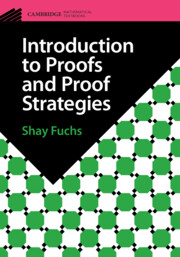Refine search
Actions for selected content:
36809 results in Cambridge Textbooks
Introduction
-
- Book:
- Primary Science Education
- Published online:
- 30 June 2023
- Print publication:
- 15 June 2023, pp 1-2
-
- Chapter
- Export citation
Chapter 12 - Graphs
-
- Book:
- Data Structures and Algorithms Using Python
- Published online:
- 30 April 2025
- Print publication:
- 15 June 2023, pp 503-556
-
- Chapter
- Export citation
Chapter 14 - Combinational Logic Circuits
-
- Book:
- Electronics
- Published online:
- 30 April 2025
- Print publication:
- 15 June 2023, pp 510-556
-
- Chapter
- Export citation
8 - Analysis of Feedback Control Systems
- from Part III - Introduction to Feedback Systems
-
- Book:
- Dynamic Systems and Control Engineering
- Published online:
- 04 August 2023
- Print publication:
- 15 June 2023, pp 379-467
-
- Chapter
- Export citation
22 - Automatic Test Pattern Generation
-
- Book:
- Introduction to VLSI Design Flow
- Published online:
- 04 April 2024
- Print publication:
- 15 June 2023, pp 474-486
-
- Chapter
- Export citation
Copyright page
-
- Book:
- Primary Science Education
- Published online:
- 30 June 2023
- Print publication:
- 15 June 2023, pp iv-iv
-
- Chapter
- Export citation

Introduction to Proofs and Proof Strategies
-
- Published online:
- 08 June 2023
- Print publication:
- 22 June 2023
-
- Textbook
- Export citation
15 - Aviation Regulation
- from Part III
-
- Book:
- Modern Economic Regulation
- Published online:
- 25 May 2023
- Print publication:
- 08 June 2023, pp 547-590
-
- Chapter
- Export citation
Chapter 5 - Public investigatory bodies
- from Part II - Public Accountability Mechanisms
-
- Book:
- Government Accountability Sources and Materials
- Published online:
- 05 May 2023
- Print publication:
- 08 June 2023, pp 89-125
-
- Chapter
- Export citation
17 - Practical Calculations Involving Two-Component Fermions
- from Part IV - Sample Calculations in the Standard Model and Its Supersymmetric Extension
-
- Book:
- From Spinors to Supersymmetry
- Published online:
- 06 July 2023
- Print publication:
- 08 June 2023, pp 667-681
-
- Chapter
- Export citation
C - Appendix C Behavior of Fermion Bilinears under P, T, C
- from Part V - The Appendices
-
- Book:
- From Spinors to Supersymmetry
- Published online:
- 06 July 2023
- Print publication:
- 08 June 2023, pp 819-824
-
- Chapter
- Export citation
5 - Anomalies
- from Part I - Spin-1/2 Fermions in Quantum Field Theory, the Standard Model, and Beyond
-
- Book:
- From Spinors to Supersymmetry
- Published online:
- 06 July 2023
- Print publication:
- 08 June 2023, pp 229-258
-
- Chapter
- Export citation
Preface
-
- Book:
- From Spinors to Supersymmetry
- Published online:
- 06 July 2023
- Print publication:
- 08 June 2023, pp xiii-xvi
-
- Chapter
- Export citation
Part IV - Judicial Review
-
- Book:
- Government Accountability Sources and Materials
- Published online:
- 05 May 2023
- Print publication:
- 08 June 2023, pp 227-469
-
- Chapter
- Export citation
References
-
- Book:
- Modern Economic Regulation
- Published online:
- 25 May 2023
- Print publication:
- 08 June 2023, pp 645-730
-
- Chapter
- Export citation
J - Appendix J MSSM and RPV Fermion Interaction Vertices
- from Part V - The Appendices
-
- Book:
- From Spinors to Supersymmetry
- Published online:
- 06 July 2023
- Print publication:
- 08 June 2023, pp 952-967
-
- Chapter
- Export citation
Chapter 3 - Administrative powers
- from Part I - Administrative Decision-Making
-
- Book:
- Government Accountability Sources and Materials
- Published online:
- 05 May 2023
- Print publication:
- 08 June 2023, pp 40-56
-
- Chapter
- Export citation
4 - Gauge Theories and the Standard Model
- from Part I - Spin-1/2 Fermions in Quantum Field Theory, the Standard Model, and Beyond
-
- Book:
- From Spinors to Supersymmetry
- Published online:
- 06 July 2023
- Print publication:
- 08 June 2023, pp 191-228
-
- Chapter
- Export citation
Chapter 7 - Review on the merits
- from Part III - Merits review
-
- Book:
- Government Accountability
- Published online:
- 05 May 2023
- Print publication:
- 08 June 2023, pp 225-245
-
- Chapter
- Export citation
E - Appendix E The Spin-1/2 and Spin-1 Wave Functions
- from Part V - The Appendices
-
- Book:
- From Spinors to Supersymmetry
- Published online:
- 06 July 2023
- Print publication:
- 08 June 2023, pp 842-872
-
- Chapter
- Export citation
